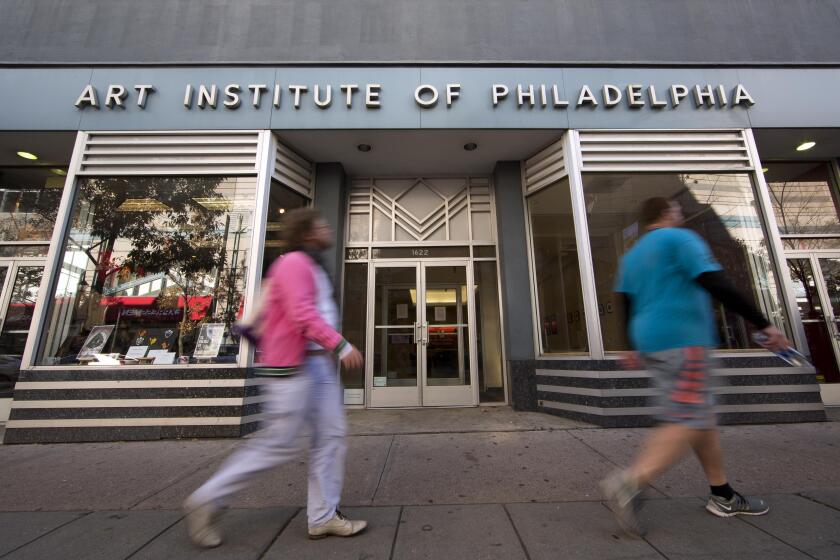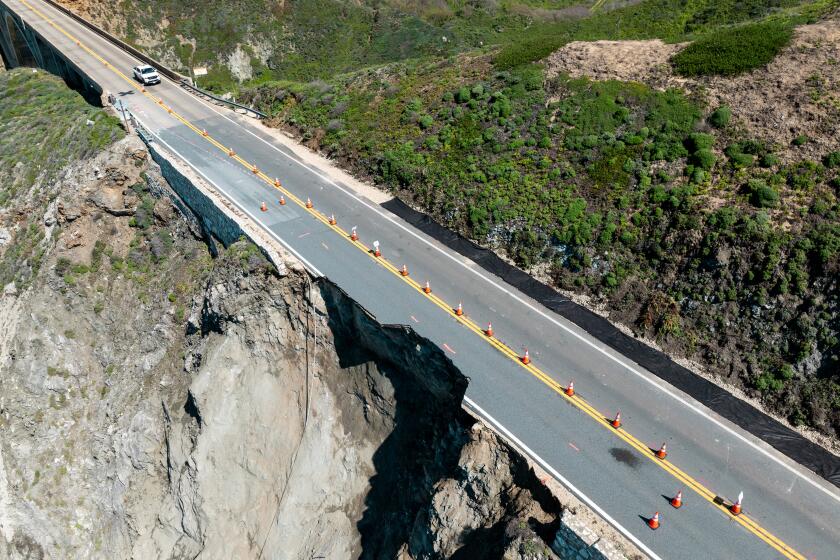Planners Recommend High-Density Downtown for Santa Clarita
High-density residential and commercial development in the Santa Clarita Valley should be concentrated in a downtown business district instead of scattered throughout the region as is typical of many sprawling Southern California communities, the Santa Clarita Planning Commission has recommended.
The Santa Clarita City Council will consider the commission’s recommendations next month when it is scheduled to debate a development plan required by the state to guide growth in the entire Santa Clarita Valley through the year 2010.
The plan covers not only the 40-square-mile city, but an additional 160 square miles in the surrounding valley because the city hopes to annex most of that land from Los Angeles County in the future.
The proposed downtown district would be located on 2,200 acres of largely vacant property within the city limits of Santa Clarita, roughly in the center of the 200-square-mile valley. It would extend along Soledad Canyon Road from the Valencia Corporate Center on the west to the former Saugus Rehabilitation site, owned by the city of Los Angeles, on the east.
Newhall Land & Farming, the valley’s largest developer, owns hundreds of acres in the proposed downtown district. Other major landowners include the cities of Los Angeles and Santa Clarita, and the Castaic Lake Water agency, said Chris Trinkley, the city’s principal planner.
“One of the ills of places like the San Fernando Valley is it’s a mass of people in search of an identity in the midst of strip centers and gas stations,” Planning Commissioner Rita Garasi said. “Having a center would give us an identity.”
Council members Tuesday had mixed reactions to the commission’s approval Monday night of a vision of a downtown where corporate headquarters, a regional shopping mall and a civic center would be linked by public transit.
Mayor Carl Boyer said he advocates the proposal because it would help preserve the semi-rural character of Valencia, Newhall and Canyon Country by concentrating high-density development elsewhere.
The commission has recommended that the City Council allow development in the outlying areas, but at lesser densities than the maximum 50 units per acre that would be permitted downtown.
But Councilwoman Jill Klajic said the downtown would become a “metropolis,” adding that she doesn’t “want to trade off the area’s small-town atmosphere just to have an identity.”
Councilwoman Jo Anne Darcy expressed enthusiasm for the concept, but said she is concerned about increasing traffic on the city’s already congested roads.
John Medina, the city’s director of public works, estimated that it would cost about $200 million to improve and build enough roads in the city to resolve its traffic problems, including those that would be created by the new downtown. The population of the city is expected to increase from 120,000 people to about 267,000 in the next 20 years, according to Los Angeles County planners.
But builders would be required to pay for substantial traffic improvements before the downtown could be developed, said Lynn M. Harris, the city’s director of community development. In addition, the downtown would be built slowly over a 20-year period, she said.
Every city and county in California is required by state law to submit a blueprint for development, known as a General Plan, within three years of incorporating. The city of Santa Clarita was formed in December, 1987, but the state extended the due date for its General Plan until the end of June.
More to Read
Start your day right
Sign up for Essential California for news, features and recommendations from the L.A. Times and beyond in your inbox six days a week.
You may occasionally receive promotional content from the Los Angeles Times.






